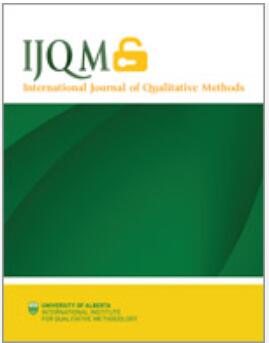Protocol of Application and Phenomenological Exploration of Body Mapping in Transgender Population: An Art-Based Research Method
IF 3.8
2区 社会学
Q1 SOCIAL SCIENCES, INTERDISCIPLINARY
引用次数: 0
Abstract
This article is a methodological proposal for Body Mapping application in transgender population framed by a phenomenological approach and aimed at exploring the implicit and pre-reflective embodied cues of the experience of discordance between the felt body (the body I am) and the objective body (‘the body I have’) that opens a space in which words do not have easy access to. In order to describe our protocol of phenomenological exploration and application of Body Mapping, we detail the complete process in a single case. It corresponds to a female-to-male participant of 18 years old undergoing hormonal treatment with testosterone for 12 months before engaging in our study. Reflections about the potential of using art-based research methods for accounting of pre-reflective bodily experience of discordance in transgender population are detailed. The combination of the Body Mapping art-based research tool with a phenomenological approach for the study of experience seems promising for studies aimed at exploring experience from an embodied approach. It represents a radical first-person research method in which the images talk by themselves. Furthermore, including the researchers as beholders of the resulting artwork, assuming the role of inter-corporality of the aesthetic bodily resonance as part of the data collection procedure seems innovative but loyal and honest with what an Art-based research paradigm is.跨性别人群身体测绘的应用方案与现象学探索:一种基于艺术的研究方法
这篇文章是一篇关于身体映射在跨性别人群中应用的方法论建议,以现象学方法为框架,旨在探索感觉的身体(我是的身体)和客观的身体(“我拥有的身体”)之间不和谐体验的隐含和预反射的具体线索,这为语言打开了一个不容易进入的空间。为了描述我们对身体映射现象学探索和应用的协议,我们在一个案例中详细描述了整个过程。它对应于一名18岁的女性对男性参与者,在参与我们的研究之前,接受了12个月的睾酮激素治疗。对使用基于艺术的研究方法来解释跨性别人群中不和谐的预反射身体体验的潜力进行了详细的思考。将基于身体映射艺术的研究工具与现象学方法相结合来研究经验,对于旨在从具体方法探索经验的研究来说似乎很有希望。它代表了一种激进的第一人称研究方法,在这种方法中,图像自己说话。此外,包括研究人员作为由此产生的艺术品的旁观者,作为数据收集程序的一部分,承担审美身体共鸣的主体间作用似乎是创新的,但对基于艺术的研究范式是忠诚和诚实的。
本文章由计算机程序翻译,如有差异,请以英文原文为准。
求助全文
约1分钟内获得全文
求助全文
来源期刊

International Journal of Qualitative Methods
SOCIAL SCIENCES, INTERDISCIPLINARY-
CiteScore
6.90
自引率
11.10%
发文量
139
审稿时长
12 weeks
期刊介绍:
Journal Highlights
Impact Factor: 5.4 Ranked 5/110 in Social Sciences, Interdisciplinary – SSCI
Indexed In: Clarivate Analytics: Social Science Citation Index, the Directory of Open Access Journals (DOAJ), and Scopus
Launched In: 2002
Publication is subject to payment of an article processing charge (APC)
Submit here
International Journal of Qualitative Methods (IJQM) is a peer-reviewed open access journal which focuses on methodological advances, innovations, and insights in qualitative or mixed methods studies. Please see the Aims and Scope tab for further information.
 求助内容:
求助内容: 应助结果提醒方式:
应助结果提醒方式:


